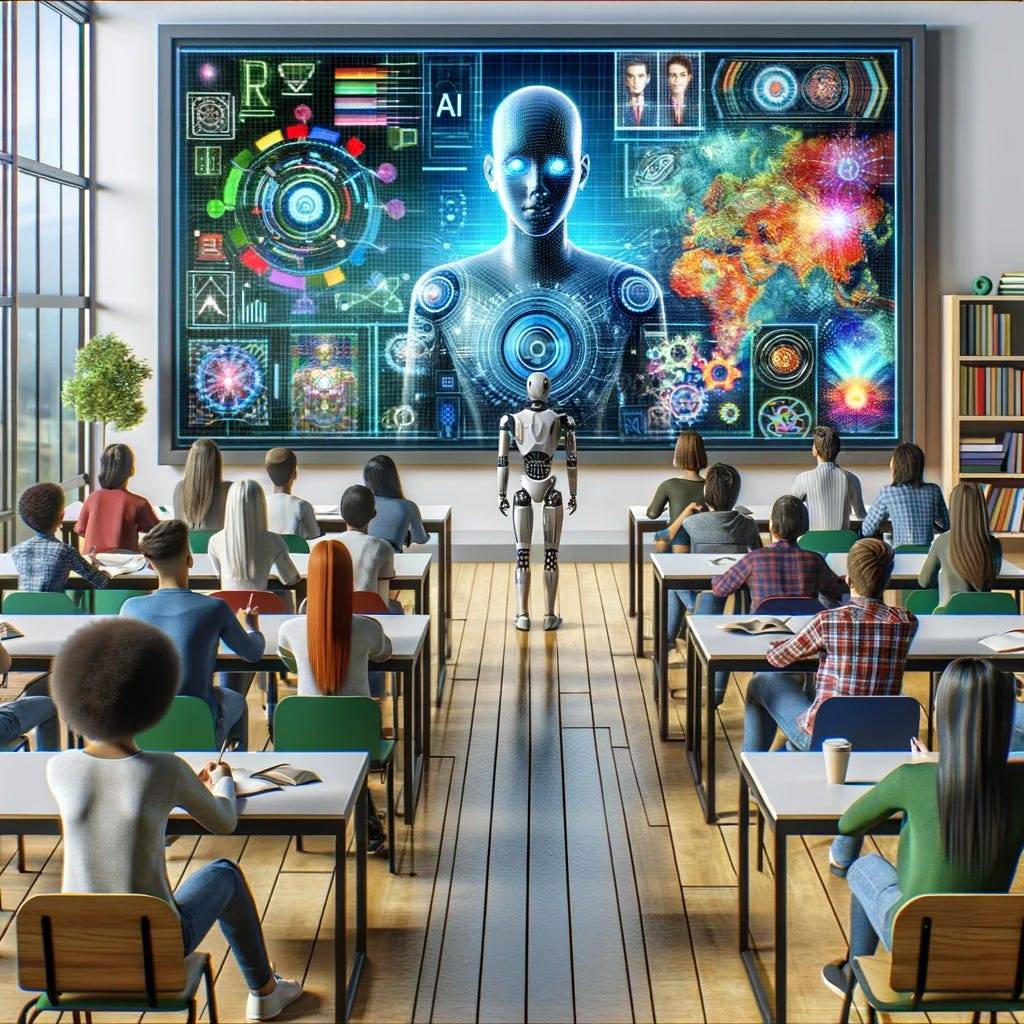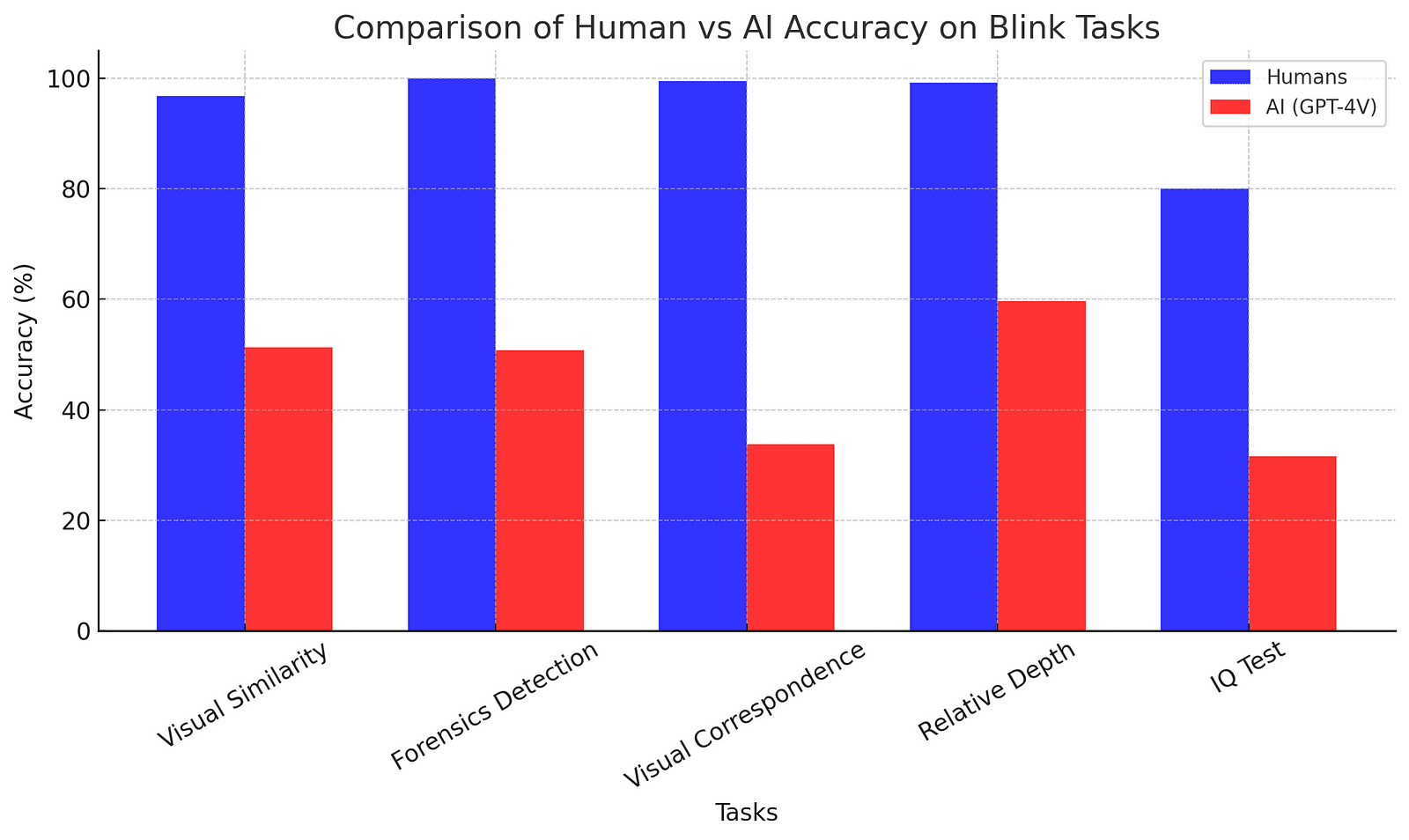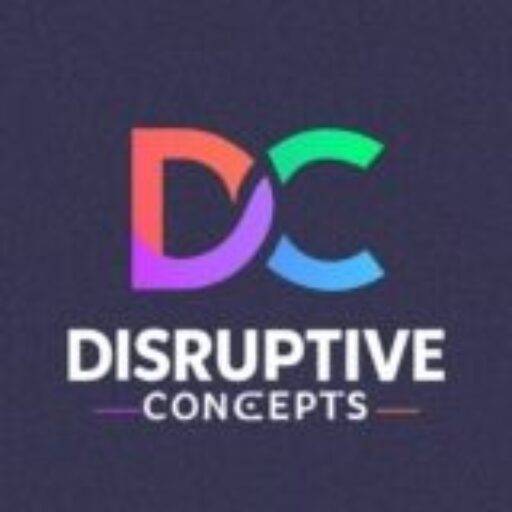
In a digital era where artificial intelligence shapes much of our interaction with technology, the Blink benchmark emerges as a pivotal development in AI research. This innovative benchmark pushes the boundaries of how machines understand and process visual information. Unlike traditional AI models that primarily decode text or static images, Blink challenges multimodal language models (LLMs) to interpret complex visual cues as humans do — effortlessly and almost instantaneously. The significance of Blink lies in its ability to evaluate the perceptual abilities of these AI systems through a series of visual tasks ranging from depth perception to forensic analysis, providing a clear measure of how close these systems come to mimicking human visual cognition.
The Challenge for Multimodal LLMs
Multimodal LLMs, like GPT-4V and Gemini, integrate visual inputs with textual data to make sense of the world around them. However, Blink reveals a striking revelation: these advanced models perform only marginally better than random chance on these visual tasks. For instance, while humans can solve these tasks with over 95% accuracy, the best AI models hover around 51%. This discrepancy underscores a critical gap in current AI technologies — their struggle with tasks that require an intricate understanding of visual relationships and dynamics, which humans handle with ease.
A New Direction for AI Research
Blink’s introduction marks a significant shift in AI research focus from mere recognition to deeper perception. By reformulating classic computer vision problems into interactive, multimodal challenges, Blink not only tests AI’s ability to recognize objects but also its capacity to understand their relationships and contextual significance. This shift encourages researchers to develop AI systems that are not just reactive but genuinely insightful, capable of interacting with the visual world in a more human-like manner.
Implications for Future Technologies
The insights gained from the Blink benchmark have profound implications for the future of AI technologies. As AI begins to more closely mimic human perceptual skills, we can anticipate more intuitive and interactive systems. Applications could range from more effective surveillance systems that can interpret complex scenes in real time to enhanced virtual assistants that understand physical contexts, improving how humans interact with digital and real-world environments alike.
Bridging the Perception Gap
Despite its challenges, Blink also offers hope. It highlights the potential pathways through which AI can evolve to close the perception gap with humans. The benchmark acts as a catalyst for the AI community to innovate and develop new models that not only perform tasks but understand the nuances and complexities of visual environments.
Here is a graph below that visually compares the performance of humans and AI on various tasks evaluated by the Blink benchmark. This visual helps highlight the gap between human and AI abilities in visual perception tasks

Human-like Accuracy in AI
Blink tasks are so straightforward for humans that they achieve an average accuracy of 95.7%. This highlights the intuitive visual processing capabilities that humans possess, which AI is striving to replicate.
AI’s Struggle with Visual Tasks
Even the best multimodal LLMs like GPT-4V and Gemini achieve only around 51% accuracy on Blink, barely outperforming random guessing. This emphasizes the current limitations of AI in handling tasks that natural human perception can manage almost instantly.
Visual Tasks Diversity
Blink includes a diverse array of visual tasks — from identifying visual similarities to determining the authenticity of images (forensics detection). This variety challenges AI across a spectrum of perceptual skills, pushing the development towards more advanced visual understanding.
Improvement over Existing Benchmarks
Blink introduces novel features like diverse visual prompts and a focus on perception beyond recognition, offering a more comprehensive assessment of AI’s visual perception capabilities compared to older benchmarks.
Specialist Models Outperform LLMs
Specialist computer vision models significantly outperform generalist multimodal LLMs on Blink. For instance, specialist models in visual correspondence and depth perception outperform multimodal LLMs by large margins, indicating the potential benefits of targeted AI development.
Conclusion
The introduction of the Blink benchmark represents a watershed moment in the journey towards truly intelligent AI. By focusing on the nuanced challenges of visual perception, Blink not only highlights the current limitations of AI technologies but also sets a new direction for future advancements. As AI research continues to push the boundaries of what machines can understand and perceive, we edge closer to a world where AI can interact with our visual world as naturally as we do. This hopeful future, where AI supports and enhances human capabilities, promises to transform our interaction with technology, making it more intuitive, effective, and seamlessly integrated into our daily lives.
About Disruptive Concepts
https://www.disruptive-concepts.com/
Welcome to @Disruptive Concepts — your crystal ball into the future of technology. 🚀 Subscribe for new insight videos every Saturday!







